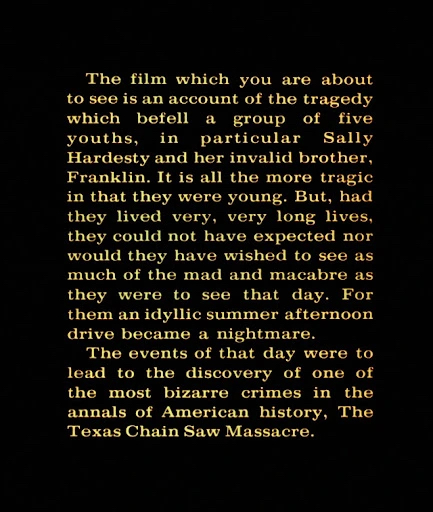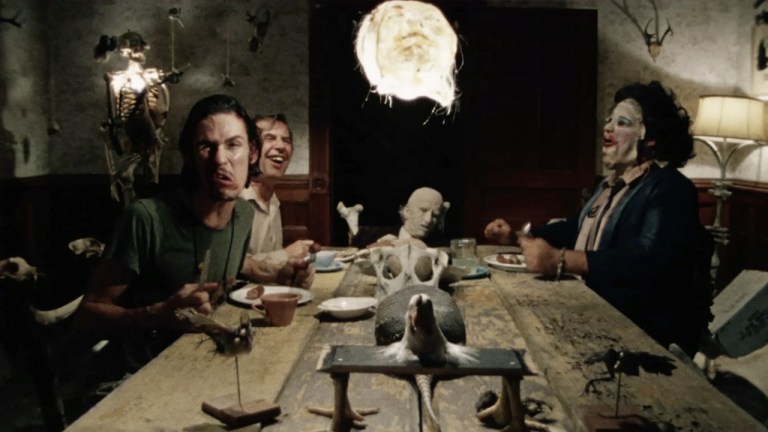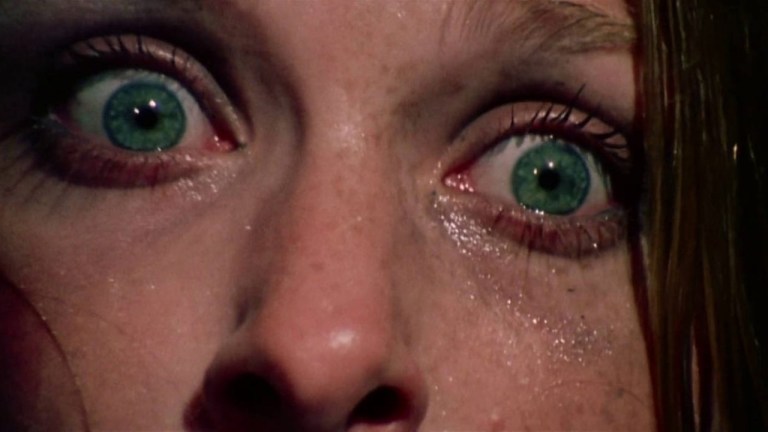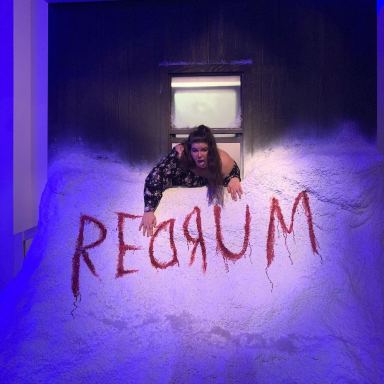The Real Reason ‘The Texas Chainsaw Massacre’ Claims to Be Based on a True Story
As Pam reads from her astrology book, “There are moments when we cannot believe that what is happening is really true. Pinch yourself and you may find out that it is.”

The Texas Chainsaw Massacre follows five people on a Texas road trip: Sally and Franklin Hardesty, Sally’s boyfriend Jerry, and their friends Pam and Kirk. The group becomes stranded and explores the area around the Hardesty’s ancestral home. Unfortunately, Leatherface and his cannibal family live next door.

The film’s opening narration insists that it is based on a true story. Yet there is no “Leatherface” killer that the film is based on. Nor were Sally and Franklin Hardesty (or any of the characters) real people. No group of Texas youths were killed in a chainsaw massacre either. The closest Texas Chainsaw Massacre can claim to being a “true story” is that inspiration was taken from several real life serial killers in creating the movie’s villains.
Some inspiration for Leatherface came from a real-life killer named Ed Gein. Gein made clothing and other household wares from taxidermied human remains, like those Pam discovers in the farmhouse’s living room. Inspiration for the characterization of Leatherface’s family members came from an interview co-writer Kim Henkel saw with a local murderer :”I saw some news report where Elmer Wayne [Henley] … said, ‘I did these crimes, and I’m gonna stand up and take it like a man.’ Well, that struck me as interesting, that he had this conventional morality at that point. He wanted it known that, now that he was caught, he would do the right thing. So this kind of moral schizophrenia is something I tried to build into the characters.”
So, why did the filmmakers lie about Texas Chainsaw Massacre being based on a true story?
The simplest answer is that it’s scarier that way. Blurring the line between fact and fiction makes a horror movie more frightening. It’s not just pictures on a screen, it’s something that can happen in real life. The gimmick helped sell tickets as people are always curious about true crime.
A more interesting answer to this question is that co-writer and director Tobe Hooper was making a subtle political statement. He has said he was inspired to lie about the movie’s authenticity as a result of feeling lied to by the U.S. government about recent affairs such as the Vietnam War and Watergate. Culturally, it was a time the public began to distrust the government and hippie idealism was turning into cynicism.

Hooper wanted a real human being to be the villain of his movie, just like humans were the real villains behind the carnage in Vietnam. Symbolically, Leatherface wearing a “man mask” can be seen as communicating to the audience that the crimes they are witnessing are literally “man made”.

Similarly, all the close-ups of Sally’s eyes in TCM could be interpreted as Hooper emphasizing the terror of witnessing brutality. Vietnam was the first time the graphic reality of war was being shown to the average American. Families would eat dinner every night while watching gruesome images on the news. In the movie, Sally is also seated at the dinner table, forced to witness the barbaric nature of the cannibal family in front of her.
Of course, I could be reading way too much into the available information about why Hooper chose the fake “based on a true story” ploy. But it’s fun to think about what was happening culturally at the time TCM was made, and what influences made their way onto the screen. It’s likely that the first answer (“it might sell more tickets”) was the primary reason the film was marketed as a true story. But that doesn’t mean it isn’t also true that Hooper was consciously or subconsciously using the lie to communicate something that America was collectively experiencing at the time.
Further reading:
